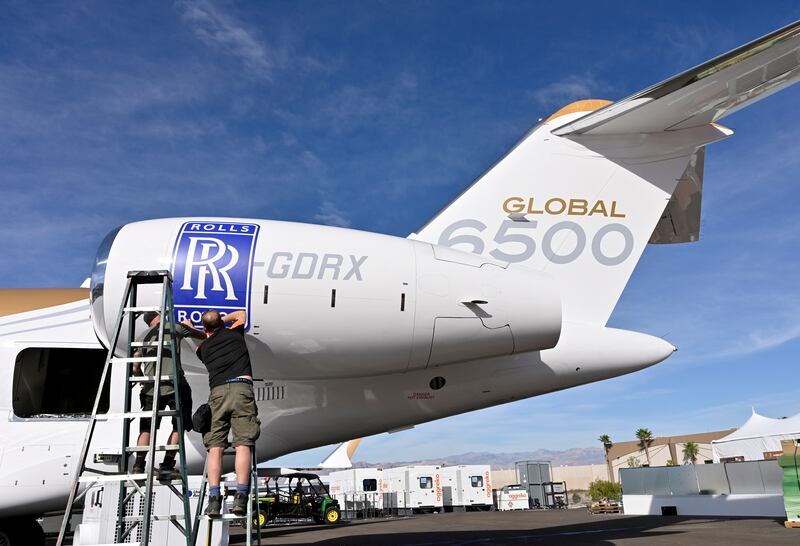British aircraft engine-maker Rolls-Royce edged back into profit in the first half of the year and said it was on track to achieve its forecasts for 2021 as its cost-cutting and disposal plans helped it to survive the Covid-hit to long-haul travel.
The company posted a pre-tax profit of £307 million ($427.4 million) for the first half of 2021, reversing the £1.63 billion loss over the same period in 2020.
Meanwhile, the group's underlying revenue from ongoing operations dipped 2 per cent to £5.2bn as the company continued to haemorrhage cash, with £1.51bn flowing out during the six-month period, although this is little more than half the £2.86bn recorded a year ago.
“The benefits of our fundamental restructuring programme in civil aerospace are evident in our reduced cash outflow and improved operational efficiency,” Rolls-Royce chief executive Warren East said.
“This leaner cost base together with a strong liquidity position gives us confidence in our ability to withstand uncertainties around the pace of recovery in international travel and benefit from the eventual rebound.”
Rolls-Royce was hammered by the collapse in air travel during the Covid-19 pandemic, plunging into the red last year with a pre-tax loss of £4bn, compared with a profit of £583 million in 2019, driven by the company's "power by the hour" business model.
Mark Crouch, analyst at multi-asset investment platform eToro, says one of the reasons the jet engine maker struggled so badly during the pandemic was because the fortunes of its largest division, civil aerospace, are so interlinked with the airline industry – one of the sectors worst affected by the pandemic.
“Put simply, the engineering giant gets paid by the number of hours its engines fly, so with international travel being severely curtailed this past 17 months, Rolls-Royce has seen its revenue plunge," he said.
“Its half-year results show that its engines flew more hours in the six months to the end of June, while £1bn of planned cost-cutting and £2bn of non-core business disposals have helped it return to profit for the period."
The company said on Thursday that its cost-cutting programme in its civil aviation arm put it on track to make £1bn in savings this year.
The group also said it could reach free cash flow of £750m as early as 2022, but the slow pace of the travel recovery means that this is now more likely to happen later.
During the first half of this year, flying hours on Rolls-Royce’s large engines were at 43 per cent of the pre-pandemic level, up from 34 per cent in the preceding six months, and slightly higher than the 40 per cent recorded in the first few months of this year.
Looking ahead, Mr East said he was encouraged by trends the company was seeing, with large engines in aircraft used on domestic routes in China and the US “returning to levels last seen in 2019”.
However, despite the lifting of some travel restrictions, revenues in civil aerospace fell 13 per cent to £2.2bn in the first six months of this year.
The group was buoyed, meanwhile, by its resilient defence arm, which makes engines for military jets and powers Britain's nuclear submarines, plus a recovery in its power systems unit, which makes engines for boats, trains and other vehicles.
Neil Shah, executive director at Edison Group, said the company's improved performances across its businesses could indicate future growth.
"Underlying revenue in defence increased by 17 per cent to £1.7bn, with the order book covering more than 70 per cent of 2022 expected revenues. Revenue in power systems were largely stable with order intake up 19 per cent to £1.4bn," Mr Shah said.
This week the company confirmed talks about selling ITP Aero – its Spain-based aircraft engine components arm – to Bain, with speculation it could sell for €1.6bn.
The group is also making significant investments into low carbon and net-zero technologies as it looks to increase its R&D spend by 75 per cent by 2025 as it strives to become carbon neutral by 2050.
“Our net zero pathway and targets, announced in June, set out our plan to enable the sectors in which we operate achieve net zero by 2050 by driving step-change improvements in engine efficiency, helping accelerate the take-up of sustainable fuels and developing new technologies," Mr East said,







